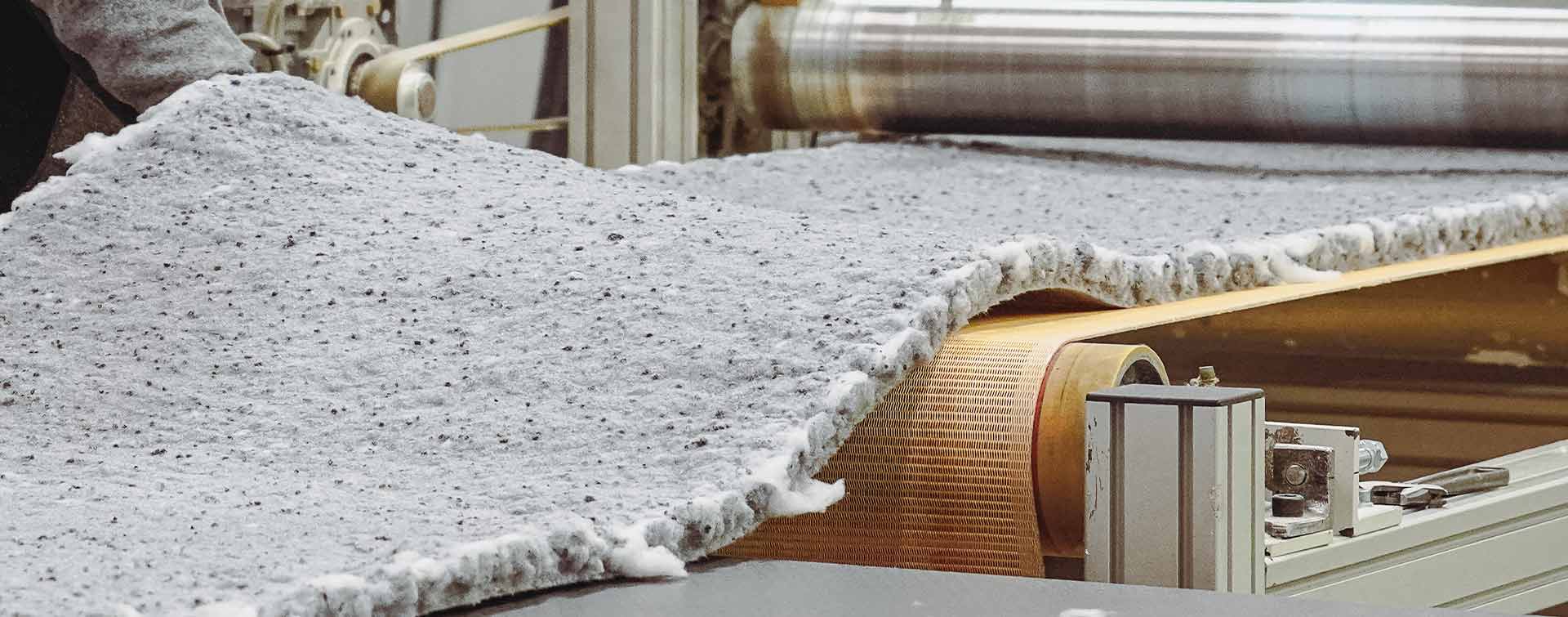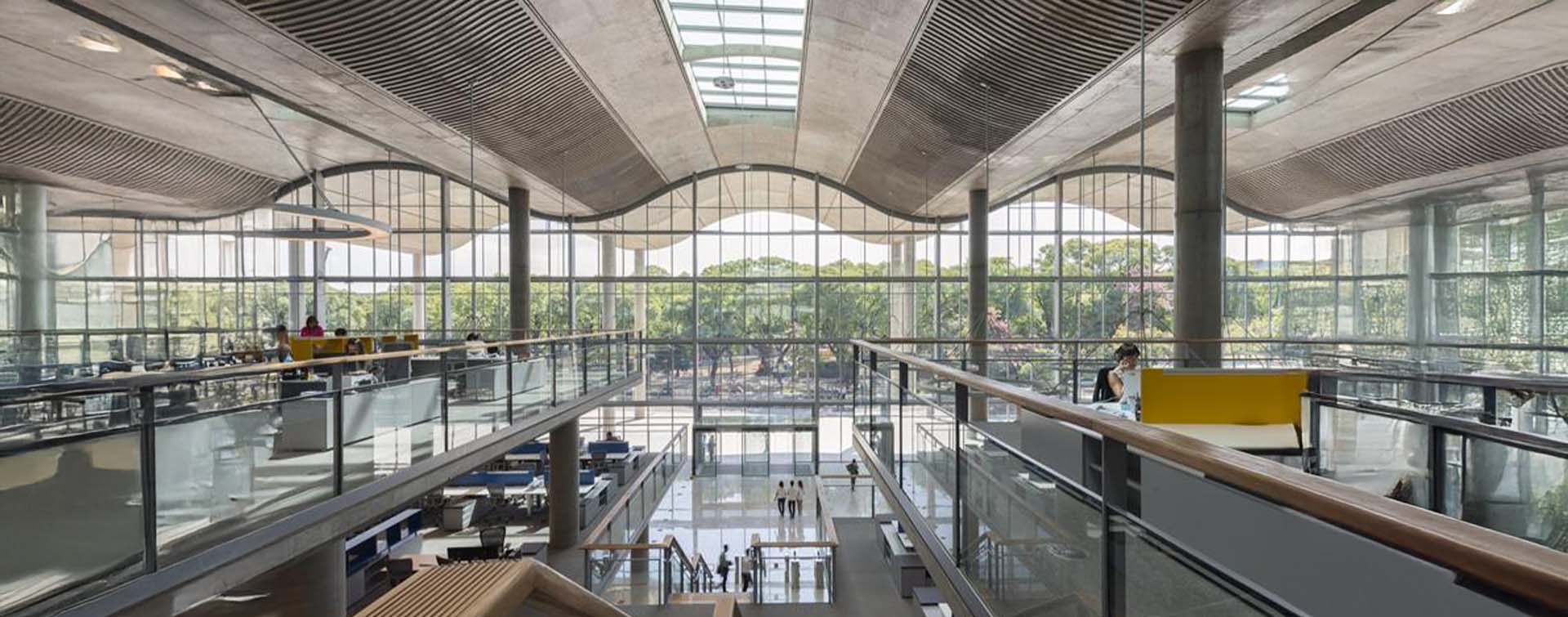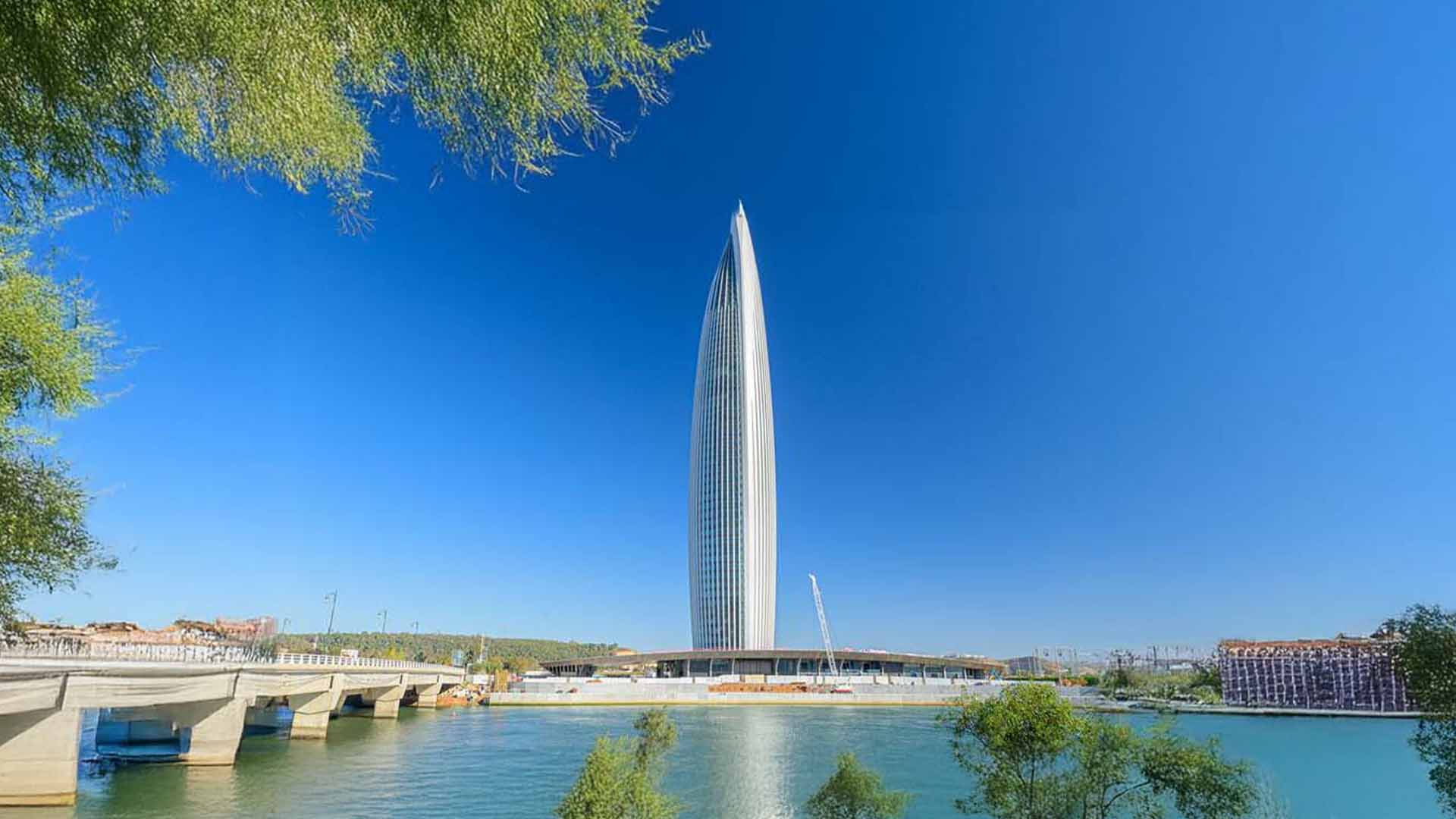 8 min
8 min
The findings are unanimous: hundreds of large cities worldwide are sinking. And the phenomenon can only worsen given urban development trends: by 2050, almost 70% of the world’s population is set to live in megalopolises.
This prospect could almost be insignificant if, at the same time, rising sea levels were not causing coastline erosion problems, endangering constructions. According to the World Economic Forum, several of the globe’s cities, including New York (United States), Dhaka (Bangladesh), London (United Kingdom), and Bordeaux (France), could be partially or totally submerged by 2050-2100. In the first part of their sixth report, the IPCC’s1 experts drove the point home: no fewer than 570 cities are facing this threat.
Also read: How can cities become more resilient to climate variations?

The excessive weight of buildings
To what can this phenomenon be attributed? Two words provide the answer: urban growth. The older the city, the more it gains weight. The pressure has reached critical levels due to the ever-growing size of buildings and the increase in built-up areas in the middle of the 20th century. All the more so as groundwater pumping to supply the inhabitants and economic activities with water contributes to the weakening of the bedrock of large cities. Lagos (Nigeria), whose population of 14 million inhabitants is set to double by 2050, is sinking 2 to 87 millimeters each year. As for the Indonesian capital Jakarta, it holds the unfortunate world record for the phenomenon, losing more than 10 centimeters in altitude per year. To such an extent that the authorities have undertaken to move to the island of Borneo by the end of 2024. Buildings are, of course, the leading incriminating factor. The American seismologist Tom Parsons estimates the weight of all the buildings in the San Francisco region (United States) to be 1.6 billion metric tons, a phenomenal load that is said to have caused the city to sink 8 centimeters.
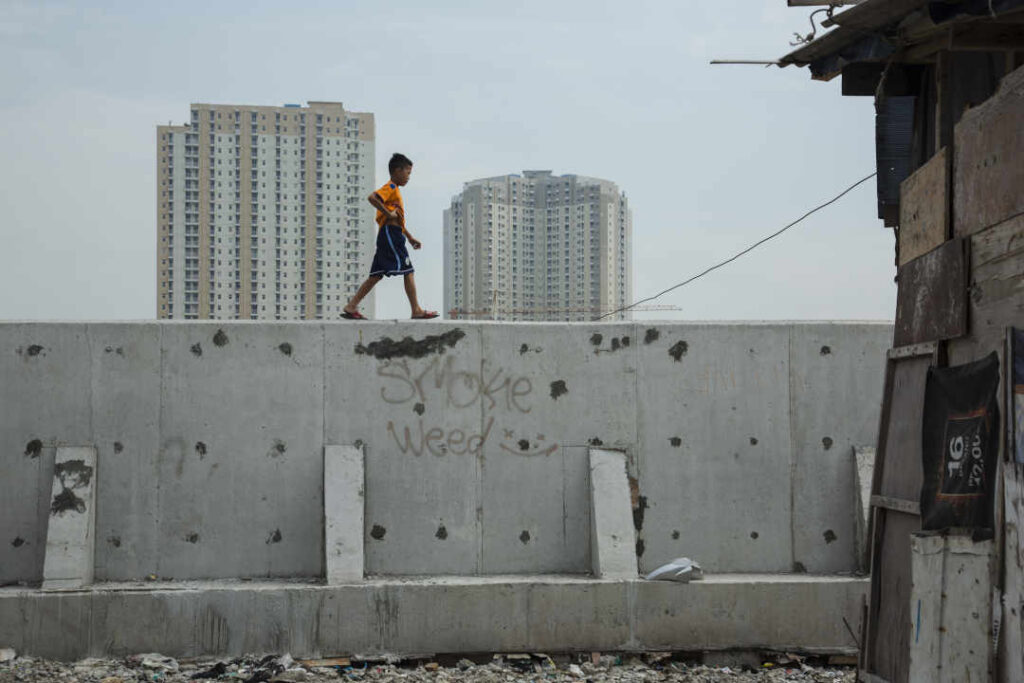
Toward zero land take?
While rampant urbanization contributes to these kinds of geological disturbances, it has an impact on soils weakened both by storm water runoff and repeated floods with their string of infiltrations.
Aware of the need to act, scientists, industrialists, and local authorities have already come up with solutions. The most obvious consists in combating land take in cities and urban sprawl, responsible for the disappearance of natural areas. However, we should be wary of the obvious, because building on the outskirts of cities helps regulate their weight! Ultimately, it is about reestablishing a virtuous water cycle, making soils capable once again of absorbing and then returning storm water, ridding the perimeters of buildings, municipal land, and schoolyards of bitumen, and increasing the number of green spaces. Land take is higher in France than its European neighbors due to households’ preference for individual housing and the incentive given to companies to set up on the outskirts of cities. The public authorities have therefore reacted by introducing the goal of zero net land take (ZAN), within the framework of the French Climate and Resilience Act. People speak of the problem of land take in France with urban sprawl. However, urban sprawl limits the weight to a given space and should therefore encourage less subsidence. The problem here is once again the water cycle with all these consequences, less the problem of subsidence.
Creating living soil
Many experts, including Italian architect and urban planner Paola Viganò2, are also calling for urban planning incorporating the concept of “living soil”. She even goes further, examining the case of “diffuse cities” – which describe urbanization without planning or consultation, where housing has been placed on top of the previous agricultural function without completely erasing it. Anticipating the potential problems posed by this type of land in regions such as Venice (Italy), a city particularly exposed to the risks of flooding, she has carried out a study on ground engineering ahead of time. “On the basis of a trial project conducted with the engineers from the local water authority,” explains Paola Viganò, “we envisaged storing water from the Alps and glacier melt in disused quarries. They could store the water intended for irrigation in summer and serve as reservoirs to combat the risks of flooding if the river levels rise. For the areas around Venice directly impacted by the rising sea level projections, we are examining the possibility of returning them to the sea by creating a system of sea walls that would define protected ‘rooms’ that could be opened one by one as the sea rises.” The system can be applied inland to prevent the consequences of heavy rainfall, as occurred in Emilia-Romagna in May 2023. A highly urbanized country, Italy is bearing the brunt of the pressures on its soil, whether they are telluric or caused by storms.
These flash floods are the result of increasingly intense rainy spells in a city where the subsurface has been overly developed with anarchic and insufficient drainage systems. The weight of buildings and superstructures, added to that of water, increases its subsidence (sinking under the load).
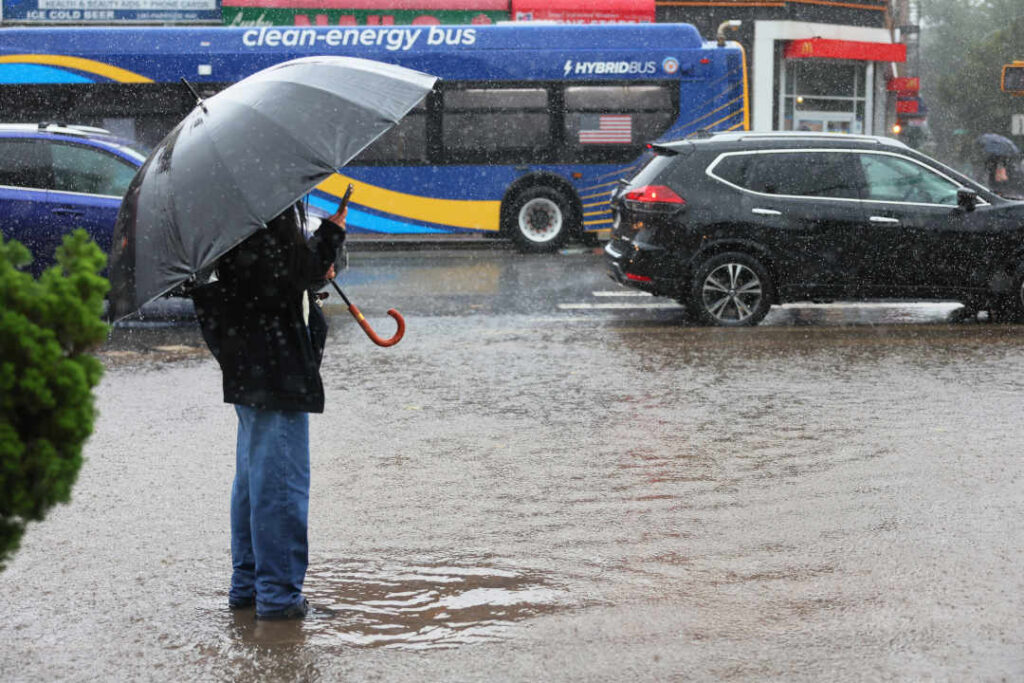
Consolidating the subsoil
To preserve the soil of coastal and inland cities from the vagaries of the climate, municipalities have decided to take the initiative and are already applying promising techniques. Two of them seem particularly pertinent. The first is artificial recharge, which consists in injecting water into depleted aquifers (geological formations permanently or temporarily containing water), to replenish them and prevent new collapses. The method has been successfully used in various areas of the world, such as the El Carracillo district (Spain), Hilton Head Island (South Carolina), the city of Perth (Australia), and even Beijing (China).
Certain world cities have stopped pumping groundwater after decades of excessive extraction. This is true of Tokyo (Japan), where the land had begun to sink more and more, reaching a peak of 24 centimeters in 1968. Following the adoption of laws limiting pumping, subsidence slowed to 1 cm per year in the early 2000s. Subject to this phenomenon since 1921, Shanghai, China, has adopted a battery of measures (limiting the use of groundwater, artificial recharge, etc.) to curb it. Today, the city’s maximum authorized land subsidence is 6 millimeters per year. If this figure is exceeded, drawing water from the aquifers is subject to stricter restrictions.
The second, less sustainable technique is deep soil mixing. In concrete terms, stabilizing agents such as cement, lime, biodegradable materials, etc. are injected deep down, improving the soil’s bearing capacity and reducing its sensitivity to settlement. It has been widely used in China and Europe for various construction projects.
Another avenue to be explored is consolidation of the foundations in the form of a slab punctuated with large composite girders, which – acting like a footing between the ground and the building – provides reinforced shoring intended to prevent land subsidence and deformation. These slabs can also be used to support the weight of structures such as skyscrapers or works of art.

Lighter construction
Reducing the weight of buildings is part of the panoply of solutions, prioritizing lighter materials such as wood, gypsum, steel, carbon fiber, bamboo, etc. In Sweden, the city of Skellefteå thus inaugurated the highest wooden skyscraper in the world, culminating at 80 meters, in 2021. Innovative technological solutions also offer an encouraging outlook, such as alloys and blends based on innovative composites and polymers, nature-inspired systems such as honeycomb structures… or light construction materials such as wood panels, metal frames, and glazing, which also make up prefabricated materials.
The weight of all the human-made inanimate solid objects (including buildings) is now higher than that of all living things (plants, bacteria, and animals, etc.), according to the Weizmann Institute3.
Soil science
Groups of researchers around the world are working on rolling out techniques combining numerical modelling and experimentation. Thanks to the development of geotechnical investigation, observational methods will find new openings. Scientists could also count on unexpected and unprecedented allies, particularly bacteria, which are already used to improve the load-bearing capacity of soils. Like the technique of biocalcification, in which bacteria injected into sea walls, for example, lead to calcite formation.
However, direct intervention in soils alone will not suffice. We must act on the causes of their degradation – beginning with reconsidering the extent of artificial surface areas in urban projects – and move toward a significant reduction in the GHG emissions behind global warming, itself responsible for rising water levels. Last but not least, it is a matter of turning to subsurface engineering, capable of meeting the challenge of heavy civil engineering work that impresses the whole world with its daring and technical expertise. The Principality of Monaco, for instance, is being extended with a six-hectare eco-district in Anse du Portier by means of backfill and sea wall caissons that have been added to a depth of 50 meters. Proof that large-scale interventions are possible.
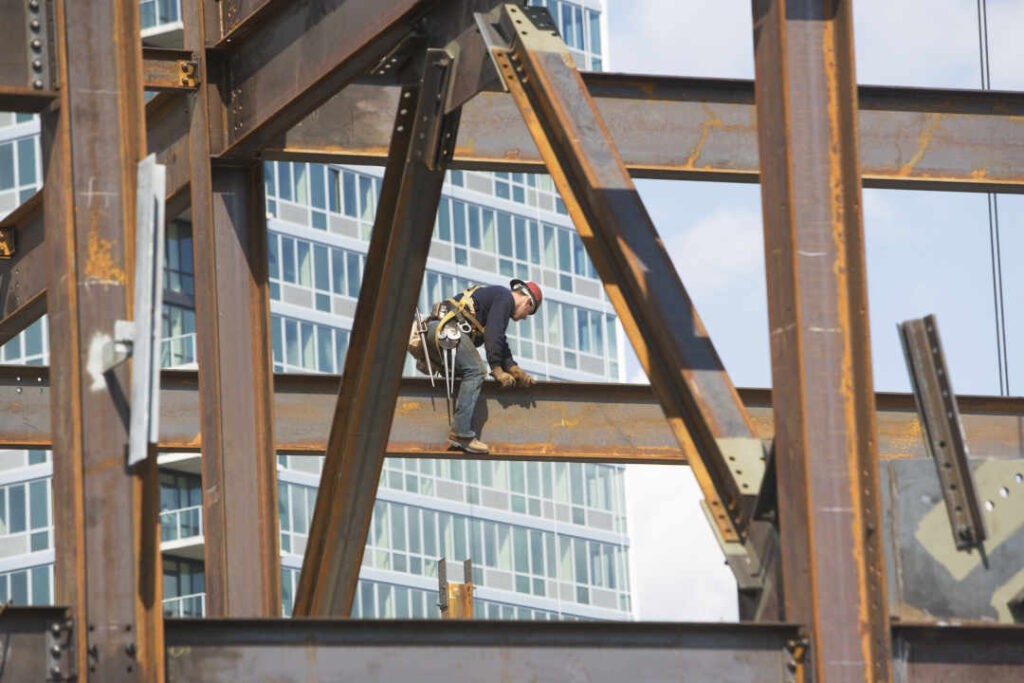
To listen: Constructing New Worlds – Episode 9 – R… for Resilience
1 Intergovernmental group of experts on climate change. 2 Paola Viganò, professor at the Swiss Federal Institute of Technology in Lausanne, received the Grand Prix de l’Urbanisme award for urban planning in France in 2013 and won the 2022 Schelling Award for Architectural Theory. 3 “The Mass of Human-Made Materials Now Equals the Planet’s Biomass” study, Nature journal, December 2020.
Photo credits: ©Antonio Masiello/GettyImages ©Michael/AdobeStock ©Ed Wray/ GettyImages, ©Michael M, Santiago/GettyImages, ©Volodymyr/AdobeStock, ©fotog/GettyImages






